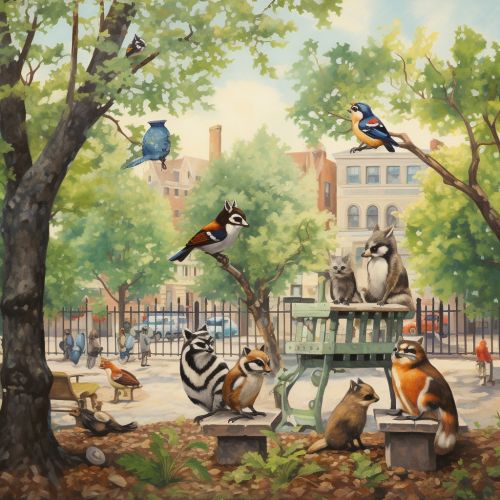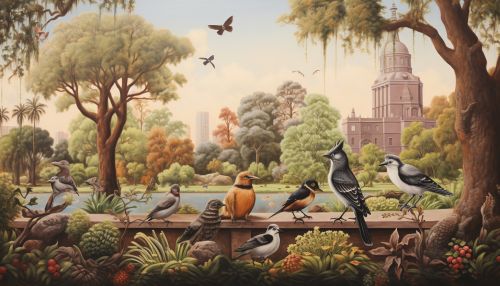The Ecology of Urban Wildlife and Human-Wildlife Interactions
Introduction
Urban wildlife refers to animal species that have come into contact with human-dominated landscapes or which live in urban areas. These species have adapted to survive in urban environments, often as a result of human activity. Urban wildlife includes a wide range of species, from birds and mammals to insects and reptiles. The study of urban wildlife and its interactions with humans is a growing field within the discipline of ecology, with implications for biodiversity conservation, public health, and urban planning.


Urban Wildlife Ecology
Urban environments present unique challenges and opportunities for wildlife. These environments are characterized by high levels of disturbance, including noise and light pollution, and a high density of humans and human-made structures. Despite these challenges, many species have been able to adapt and thrive in urban areas.
Adaptations to Urban Environments
Urban wildlife species have developed a range of adaptations to survive in urban environments. These adaptations can be physiological, such as changes in diet or reproductive strategies, or behavioral, such as changes in activity patterns or habitat use. For example, many urban bird species have adapted to feed on human-provided food sources, while urban mammals such as raccoons and foxes have become nocturnal to avoid human activity.
Urban Habitats
Urban environments provide a variety of habitats for wildlife. These include green spaces such as parks and gardens, built structures such as buildings and bridges, and water bodies such as rivers and ponds. Each of these habitats supports a unique community of species. For example, urban parks can support a diverse bird community, while urban rivers can provide habitat for a range of aquatic species.
Human-Wildlife Interactions in Urban Areas
Human-wildlife interactions in urban areas can have both positive and negative impacts on wildlife populations and human communities. These interactions can occur in a variety of contexts, from wildlife viewing in urban parks to conflicts over property damage or public health concerns.
Positive Interactions
Positive human-wildlife interactions in urban areas can include wildlife viewing, feeding, and gardening for wildlife. These activities can provide benefits for both humans and wildlife. For example, wildlife viewing can provide recreational opportunities for urban residents and can increase public support for wildlife conservation. Similarly, gardening for wildlife can provide habitat for urban wildlife species and can contribute to urban biodiversity.
Negative Interactions
Negative human-wildlife interactions in urban areas can include conflicts over property damage, public health concerns, and negative impacts on wildlife welfare. For example, urban deer can cause property damage by feeding on garden plants, while urban rodents can pose public health risks through the transmission of diseases. Additionally, human activities such as feeding wildlife can have negative impacts on wildlife welfare by promoting dependence on human-provided food sources.
Management of Urban Wildlife and Human-Wildlife Interactions
The management of urban wildlife and human-wildlife interactions is a complex task that requires a balance between the needs of wildlife populations and human communities. This can involve a range of strategies, from habitat management to public education and policy development.
Habitat Management
Habitat management in urban areas can involve the creation, enhancement, and maintenance of habitats for urban wildlife. This can include the creation of green spaces, the installation of nest boxes or other habitat features, and the management of vegetation to provide food and cover for wildlife.
Public Education
Public education is a key component of urban wildlife management. This can involve educating the public about the value of urban wildlife, the impacts of human activities on wildlife, and how to avoid negative interactions with wildlife. For example, public education campaigns can discourage the feeding of wildlife and promote responsible wildlife viewing practices.
Policy Development
Policy development can play a key role in the management of urban wildlife and human-wildlife interactions. This can involve the development of policies and regulations to protect urban wildlife, manage human-wildlife conflicts, and promote coexistence between humans and wildlife. For example, urban wildlife policies can regulate the feeding of wildlife, the management of wildlife habitats, and the response to wildlife conflicts.
